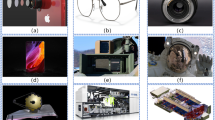This paper presents a model for predicting the cutting forces for waved-edge milling cutters that are widely used in rough machining. The development of the model is based on the analysis of the complicated cutting edge of waved-edge cutter. According to the existing local cutting force model and from the relationship of local cutting force and chip load, local cutting force can be derived. Then the model is obtained by dividing the cutter into a number of differential elements in the axial direction and summarising the resultant cutting force produced by each differential cutter disc engaged in the cut. A numerical algorithm is introduced for the calculation of total force and the calibration of the relevant parameters in the model. A series of experiments under different cutting conditions are conducted to confirm the validity of the developed model. The agreement between the experimental and simulative results is satisfactory, which shows that the model is effective for cutting force prediction in end milling with waved-edge cutters.
Similar content being viewed by others
Author information
Authors and Affiliations
Additional information
ID="A1"Correspondance and offprint requests to: Prof. L. Zheng, Institute of Manufacturing Engineering, Department of Precision Instruments and Mechanology, Tsinghua University, Beijing, 100084, P. R. China. E-mail: lzheng@tsinghua.edu.cn
Rights and permissions
About this article
Cite this article
Zhang, B., Zheng, L., Zhang, Z. et al. A Cutting Force Model for a Waved-Edge End Milling Cutter. Int J Adv Manuf Technol 21, 403–410 (2003). https://doi.org/10.1007/s001700300047
Issue Date:
DOI: https://doi.org/10.1007/s001700300047




